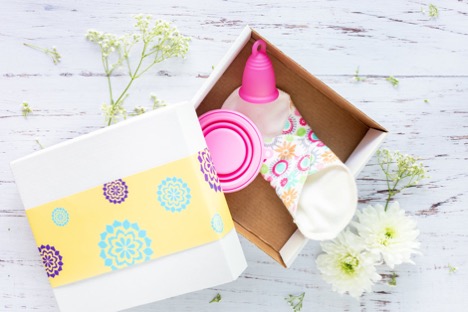The rising popularity of menstrual cups has prompted some interesting conversations surrounding periods, sustainability, and the stigma around menstruation. If you’re part of the majority of American women who’ve got used to using and disposing of tampons and napkins regularly, you may want to consider the period cup, an alternative device that will lessen the number of products you use on your period. Here, we are going to list some of the pros and cons of switching to menstrual cups to help you make that decision.
THE PROS
Environmentally-friendly
Menstrual cups are great news for the conscious shopper, as most are designed for long-term use and are made with sustainability in mind. Maryville University points out how brands are willing to spend big bucks to take advantage of marketing trends, which includes using buzzwords like “environmentally-friendly” and “sustainability” to expand their target markets. Thankfully, this is not the case with menstrual cups, as they are actually good for the earth by design. Unlike tampons and napkins, cups don’t clog up landfills and use up trees during their production.
Lower costs
A cost breakdown on The Huffington Post reveals that a woman will spend around $1,800 on feminine hygiene in her lifetime, with the bulk of it going on constantly buying tampons. Investing in a menstrual cup means you’ll spend less on your periods as you can just use the same device over and over again. Keep in mind that some menstrual cups are disposable, so it’s important to read the fine print before purchasing one.
Fewer visits to the bathroom
Compared to tampons, which you need to change every four to eight hours, you can use menstrual cups up to 12 hours depending on your flow. However, it is generally recommended that you clean and change your cup every 4 to 6 hours to avoid infections. This still means fewer trips to the bathroom and less interruptions during your daily activities. It’ll also give you a better idea of just how much blood comes out during your period — it may be much less than you initially thought.
The cons of using a menstrual cup
Gross and messy factors
The main complaint with menstrual cups is that emptying it can be a messy process. Although most will find their own technique to empty the cup in a relatively clean way after a few tries, some may never get over the gross sight or feeling of it. Taking it out and cleaning it in a public bathroom just complicates things even more.
Comfort issue
Although not as daunting and invasive as the process of inserting an IUD, menstrual cups still take some getting used to. Removing the cup will take some practice, and reinserting it may not be the most pleasant feeling for some. Others may find that it’s difficult to find a cup that fits just right, and will have to go through different brands and shapes to find the perfect one. If your cup is leaking, it’s probably too small for your vagina. It’s really a case of trial and error, so don’t hesitate to try and change cup sizes if the one you buy doesn’t fit right. A rule of thumb to remember is that the small ones are usually for younger women with no history of child birth, while the larger cups are for older women who have previously given birth. Another reason a menstrual cup may be hard to insert is a vaginal infection, which can cause irritation during insertion, consult with your doctor if this is the case.
THE CONS
Health risks
As with any device that comes in close contact with our bodies, using menstrual cups come with some health risks, too. For instance, researchers from Western University reported a case involving a woman contracting toxic shock syndrome from using her menstrual cup — a common fear that people have about any kind of feminine hygiene product. The case study is a reminder that women should take all the necessary precautions and be vigilant about cleaning menstrual cups thoroughly between uses, as they can harbor unwanted bacteria that can cause complications. Aside from regular cleaning, avoid having sex with your menstrual cup on, as this can push it in deep and cause it to get stuck. If your cup does get stuck, simply press on it gently and slowly release it from the edges until it comes out. Don’t pull your cup because this will make the situation worse — see your doctor if you cannot get a menstrual cup out on your own.
The importance of comfort, proper hygiene, and access to the right supplies cannot be understated for menstruating women. UNICEF highlights how women menstruate for approximately 7 years during their lifetime, a big chunk of time and a significant one in an average woman’s life. With this in mind, it’s crucial for women everywhere to be familiar with options like tampons and menstrual cups in order to find the solution that suits them best.
Article specially written for WalkInGyn.Com
By: Alice Aria

